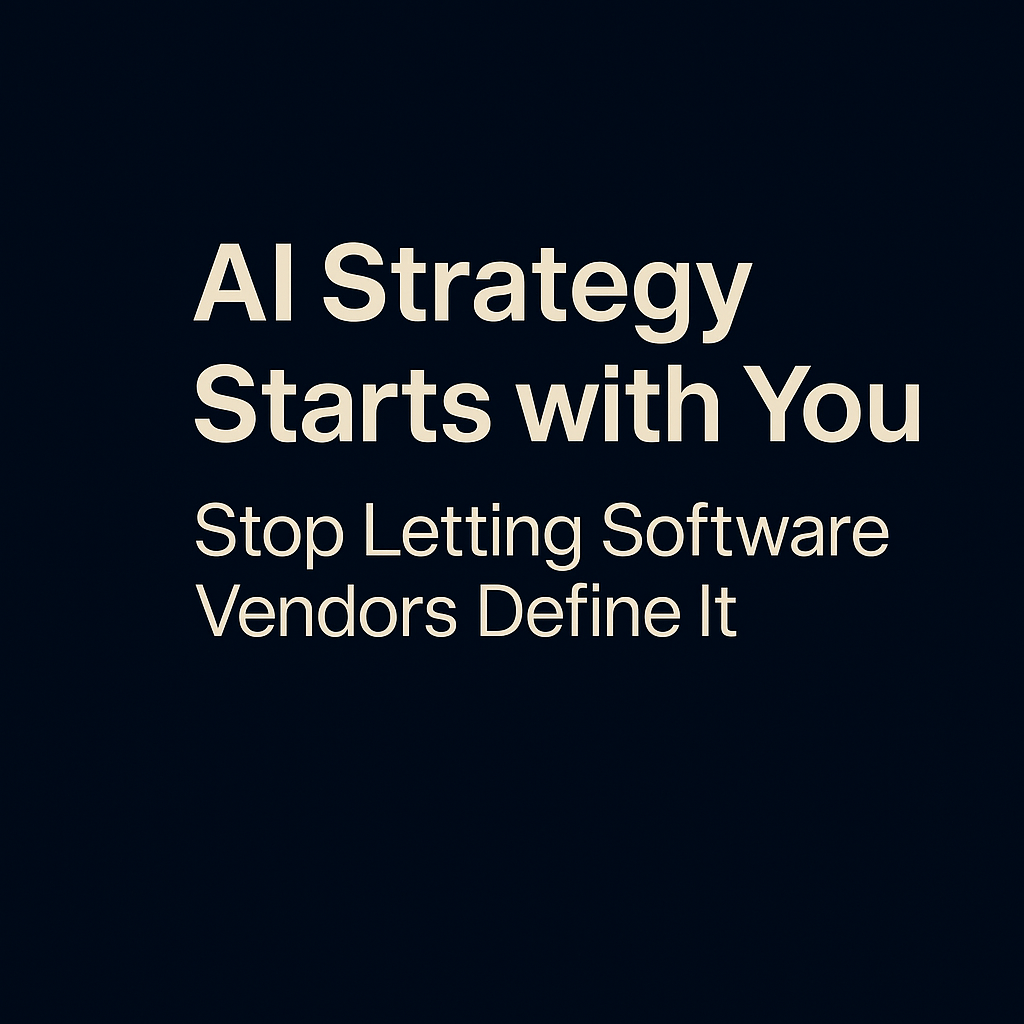When organizations embark on a digital transformation or ERP implementation journey, one of the most common and costly missteps is trusting software vendors too blindly. It’s easy to be dazzled by compelling sales pitches, glossy product demos, and extravagant conference experiences. But behind the polish often lies a hard truth: what’s good for the vendor may not be good for you.
Understanding how to separate vendor-driven profit motives from what truly serves your business goals is essential — especially when the stakes involve multi-million-dollar systems and long-term operational impact.
Table of Contents
ToggleMisaligned Incentives: Software Sales vs. Business Transformation
At the heart of the issue is a fundamental misalignment of goals. Vendors are in the business of selling software licenses and services. You, as an organization, are trying to transform processes, drive efficiencies, and improve performance. These are not inherently contradictory objectives, but they are rarely one and the same.
As Eric Kimberling of Third Stage Consulting puts it, “More often than not, what’s in the software vendor’s best interest is probably not in your best interest.” The reason is simple: your long-term business success doesn’t always align with their quarterly sales quota.
In some cases, yes — a vendor’s recommendation may genuinely be what’s best for your business. But assuming that’s always the case is a dangerous mindset. Vendors may push you toward high-margin products, expedited timelines, or extensive add-ons that may not be necessary, all in the name of profit.
The “Best Practices” Sales Pitch: One Size Doesn’t Fit All
One of the most common selling tactics vendors use is the promise of “industry best practices” or “out-of-the-box” configurations. These solutions are designed to be broadly applicable, often based on the vendor’s experience with hundreds or thousands of customers. However, they are not tailored to the unique nuances and differentiators that make your organization successful.
According to Scott Brinker, who leads Third Stage’s expert witness practice, “When a salesperson tells you their system works 100% out of the box for every client — be concerned.” Every organization has processes, workflows, or customer experiences that deviate from industry norms — and that’s often a good thing. It means you’ve built competitive advantages that deserve to be preserved or enhanced — not overridden by a generic template.
If you blindly adopt a vendor’s configuration without pushing back, you risk diluting what makes your business unique. And more importantly, you risk implementing technology that hinders rather than supports your operations.
What Happens When You Trust Too Easily: Real-World Consequences
In his work as an expert witness for failed implementations, Scott has seen countless horror stories that start the same way: an executive team gets swept up in the excitement of a software conference. They attend private dinners, mingle with charismatic salespeople, and get VIP access to live events. Before long, they’ve signed a multi-year agreement for a software solution they barely vetted.
What follows is often months or years of frustration, misalignment, cost overruns, and in some cases, legal disputes. These scenarios rarely result from technical failure. More often, they stem from inadequate planning, poor requirements definition, and a lack of independent evaluation.
These mistakes are avoidable but only if organizations take a more strategic, methodical approach from the beginning.
Five Ways to Safeguard Your Digital Transformation
To avoid falling into a vendor-driven trap, organizations must shift from a reactive to a proactive mindset. That starts with a few critical steps:
1. Start with a Clear Definition of Business Needs and Requirements
Before you speak to a single vendor, take the time to understand your business from the inside out. What are your core processes? Where are your inefficiencies? What’s your long-term strategic vision?
Defining your business needs upfront creates a blueprint that guides every conversation moving forward. Without it, you risk letting vendors define your priorities for you — which often leads to poor-fit solutions and internal confusion.
If your team lacks the experience to lead this internally, consider working with an independent advisor to facilitate workshops, stakeholder interviews, and process mapping sessions that identify your true requirements.
2. Use a Formal Selection Process — Not Gut Feelings
Too often, software selection is driven by instinct, relationships, or assumptions. Instead, treat it like the high-stakes decision it is. Create a formal selection framework that includes:
- Request for Proposal (RFP) development
- Scripted vendor demos
- Objective scoring criteria
- Detailed total cost of ownership (TCO) analysis
A structured process ensures that vendors are evaluated on how well they meet your specific needs — not just how flashy their demo is or how persuasive their rep sounds.
3. Talk to Multiple Vendors (Even If You Already Have a Favorite)
Even if one vendor seems like the obvious choice, it’s important to benchmark them against alternatives. Competitive pressure often forces vendors to sharpen their pricing, refine their implementation approach, or offer additional flexibility.
More importantly, talking to multiple vendors gives you a broader perspective of what’s possible — and helps you identify red flags that you might miss when evaluating a single solution in isolation.
4. Lean on Independent, Objective Advisors
Unlike software vendors, independent consulting firms like Third Stage Consulting don’t make money based on which software you choose. Their goal is to ensure that your selection and implementation align with your broader business goals.
An independent advisor can bring experience from hundreds of implementations, helping you ask the right questions, challenge assumptions, and see through the sales pitch. They can also ensure that your internal team is aligned before decisions are made — preventing miscommunication and internal resistance later.
5. Don’t Let Conferences, Dinners, and Swag Cloud Your Judgment
Yes, it’s nice to be wined and dined. Yes, it’s fun to go backstage at a concert. But don’t let those perks override the discipline required to make sound business decisions. As Eric jokes, “Surely, if a software vendor lets you meet Bruno Mars, you have to sign a contract, right?” Of course not — but you’d be surprised how often emotional momentum plays a role in major purchases.
Stay grounded. Enjoy the experience, but keep your eye on the real prize: choosing the right solution to help your business evolve.
Lead the Transformation — Don’t Let the Vendor Lead You
Perhaps the most important takeaway is this: your technology should adapt to your business, not the other way around. When organizations lack clarity or confidence in their direction, they tend to defer to the vendor’s suggestions. And when that happens, it’s the vendor — not you — who ends up driving the transformation.
Be proactive. Know what you want. And if you don’t know yet — pause, reflect, and bring in experts to help you define it. That clarity will empower you to evaluate vendors on your terms, ensuring that their recommendations align with your needs — not just their margins.
Final Thoughts
Digital transformation is too important to outsource to a vendor’s sales team. While vendors can be valuable partners, they must be treated as just that — partners, not decision-makers. The burden of due diligence, strategic alignment, and long-term planning rests with you.
Make sure your transformation is driven by what’s best for your business not what’s easiest to sell.






